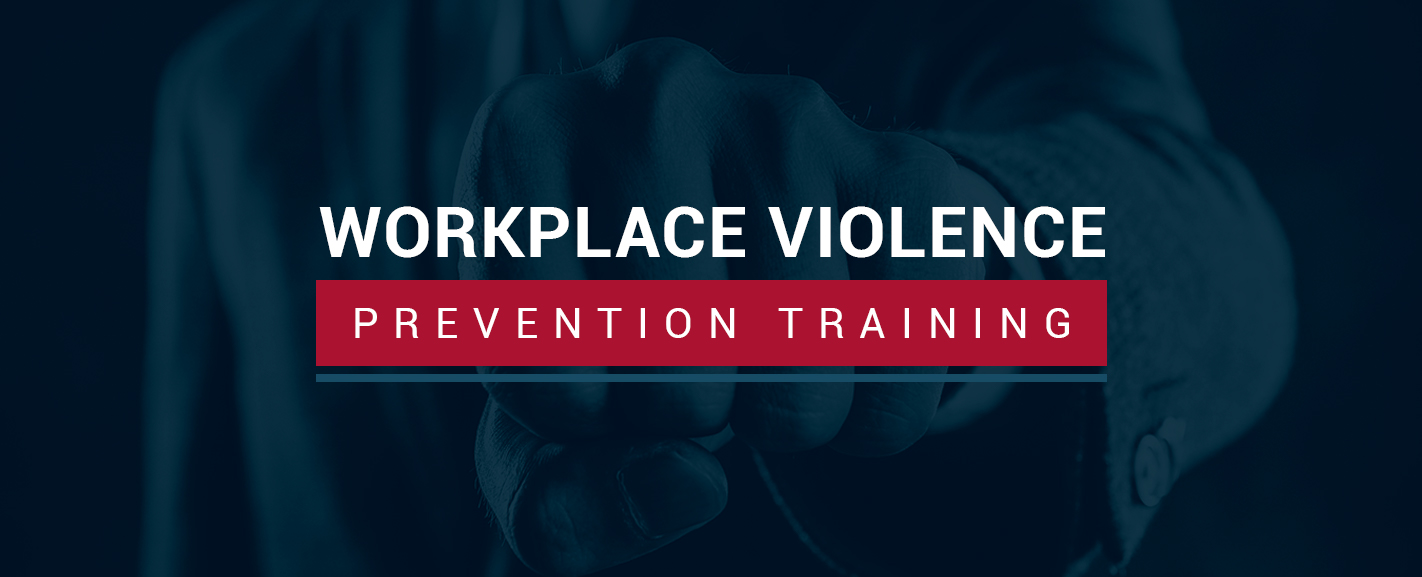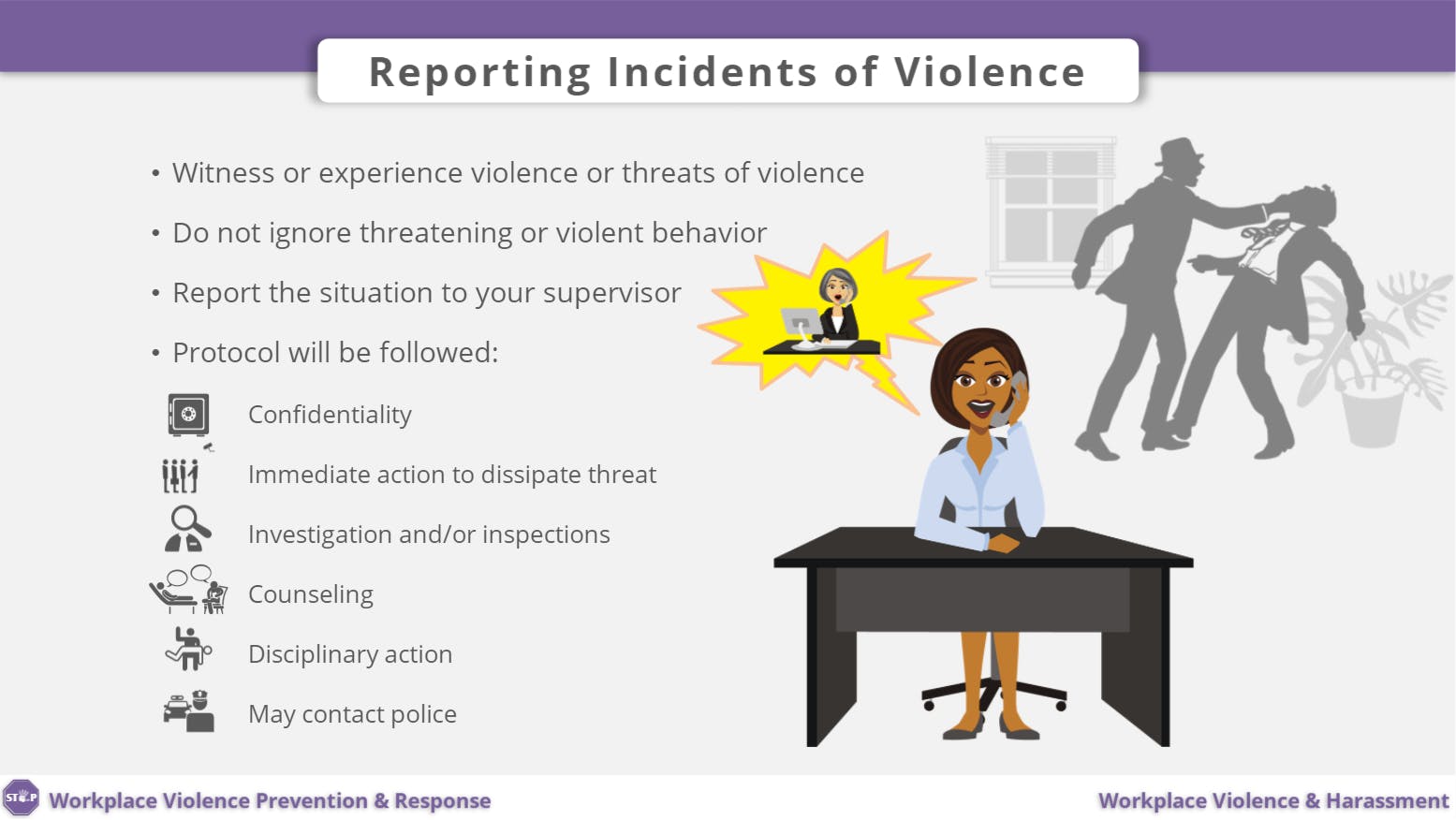Comprehending Legal Needs for California Workplace Violence Prevention Programs
Comprehending Legal Needs for California Workplace Violence Prevention Programs
Blog Article
Evaluating the Impact of Work Environment Culture on the Success of Violence Avoidance Initiatives and Worker Wellness
The junction of workplace culture, physical violence avoidance efforts, and employee wellness warrants cautious evaluation, as these elements collectively affect organizational success. A culture that focuses on open interaction and mental safety can encourage workers to identify and report possible dangers, therefore promoting a setting for both psychological wellness and reliable violence avoidance approaches. However, the subtleties of just how these variables engage continue to be complex and complicated. Recognizing the details mechanisms at play can disclose crucial insights that may notify future efforts and drive purposeful adjustment within companies. What underlying dynamics might be affecting these results?
Recognizing Workplace Culture
Regularly, workplace culture serves as the structure for employee communications and general organizational behavior. It incorporates the common values, beliefs, and methods that form the environment in which workers run.

Organizations should assess their current work environment society to recognize areas for improvement. This evaluation can entail studies, emphasis groups, or one-on-one discussions. By recognizing the social characteristics at play, organizations can execute targeted treatments that promote a safer and more respectful job setting, inevitably reducing the risk of violence in the workplace.
Role of Staff Member Well-Being
A positive work environment society not only affects business actions however also considerably effects employee health. When employees feel valued and appreciated, their general job satisfaction increases, bring about boosted psychological and mental health. This, subsequently, cultivates a feeling of belonging and loyalty, which is necessary for long-lasting involvement and efficiency.
Furthermore, a helpful social setting promotes open interaction, making it possible for workers to share problems and seek help without anxiety of stigma. This visibility is important in resolving issues associated to tension, burnout, and interpersonal conflicts, which can adversely influence both private well-being and business consistency.
Additionally, companies that focus on employee health often see decreased absenteeism and turnover prices. Healthy workers are more resistant and better furnished to deal with work environment difficulties, contributing to an extra productive and stable labor force.
Buying staff member well-being through initiatives such as wellness programs, mental health and wellness sources, and flexible functioning plans can create a positive feedback loophole, boosting both private fulfillment and collective business success (california workplace violence prevention). Eventually, prioritizing worker wellness is not simply an ethical imperative; it is a strategic method that profits the whole organization
Violence Avoidance Methods
Applying efficient physical violence avoidance methods is critical for keeping a healthy and balanced and risk-free office atmosphere. Organizations must take on an extensive method that includes policy development, worker training, and aggressive interaction. Developing clear office physical violence plans is the very first step, ensuring that all employees understand acceptable behavior and the consequences of infractions.
Training programs ought to be created to enlighten staff members regarding acknowledging indication of possible physical violence, dispute resolution techniques, and emergency reaction procedures. company website Routine drills and simulations can enhance readiness, fostering a culture of understanding and responsibility.
In addition, cultivating open communication channels encourages workers to report problems without fear of revenge. This can be assisted in via anonymous reporting systems or regular comments sessions. Additionally, advertising a helpful workplace society that values respect and inclusivity can substantially mitigate the risk of violence.
Organizations needs to also involve in regular assessments of their workplace society and violence prevention strategies, adapting them to advancing demands. By focusing on these methods, companies not only shield their employees but likewise boost overall health, ultimately adding to a much more productive workplace.
Determining Social Effect
Gauging the impact of workplace culture on violence avoidance efforts is essential for comprehending the efficiency of existing methods and determining areas for improvement - california workplace violence prevention. To achieve this, companies have to utilize a diverse approach that incorporates measurable and qualitative techniques. Studies and evaluations can gather data on staff member assumptions of work environment assistance, safety and security, and inclusivity systems, while incident records supply concrete proof of violence incidents and their context within the business society
Additionally, focus groups and interviews can disclose deeper insights right into employees' perspectives, experiences, and ideas surrounding physical violence prevention initiatives. Evaluating this qualitative data helps organizations to pinpoint social staminas and weaknesses that may either promote or impede reliable avoidance approaches. Benchmarking versus sector criteria permits for relative evaluation, aiding companies gauge their performance relative to peers.

Producing Helpful Environments
Often promoting an encouraging atmosphere within the work environment is important for effective violence prevention. Such atmospheres equip employees to interact honestly concerning their browse around here issues and experiences, thus identifying possible concerns prior to they intensify. A society of assistance improves count on amongst staff member, urging partnership and aggressive analytical.
To develop a supportive atmosphere, companies have to prioritize training programs that concentrate on dispute resolution, psychological intelligence, and active listening. These skills outfit workers to manage social connections constructively, minimizing the chance of misconceptions that can lead to violence - california workplace violence prevention. Additionally, applying mentorship programs can offer employees with support and confidence, adding to their total well-being
Management plays a crucial function in shaping a helpful workplace society. By modeling compassionate behavior and demonstrating a commitment to employee well-being, leaders set a tone that urges others to do the same. Normal responses devices, such as confidential surveys, can also assist assess employee view and emphasize areas for renovation.
Ultimately, an encouraging atmosphere not only minimizes the risk of physical violence yet also boosts worker morale, job fulfillment, Resources and efficiency, strengthening the organization's dedication to fostering a growing and risk-free office.
Conclusion
A positive work environment culture substantially influences both physical violence prevention efforts and staff member wellness. By cultivating open communication and encouraging the reporting of issues, companies can enhance mental wellness and work satisfaction amongst workers. An encouraging society strengthens the performance of violence prevention techniques by dealing with and promoting the timely acknowledgment of caution indicators. Inevitably, growing such a setting offers as an important foundation for effective treatments and contributes to the general success of the company.
The crossway of workplace culture, violence avoidance initiatives, and employee wellness warrants cautious exam, as these elements jointly affect organizational success. A society that focuses on open communication and psychological safety and security can encourage workers to recognize and report prospective dangers, thus fostering an environment conducive to both psychological health and efficient physical violence avoidance approaches.A positive work environment culture not only affects business behavior but also considerably impacts employee wellness. Studies and analyses can collect data on staff member understandings of work environment assistance, safety and security, and inclusivity systems, while incident reports offer concrete evidence of violence incidents and their context within the organizational culture.
A positive workplace culture significantly affects both violence avoidance initiatives and worker well-being.
Report this page